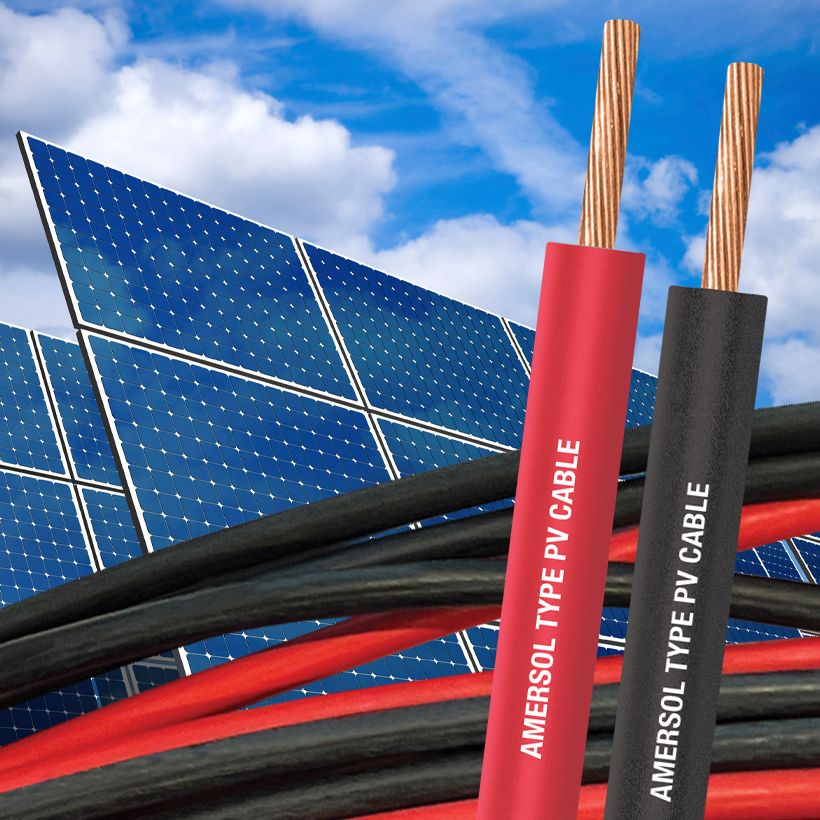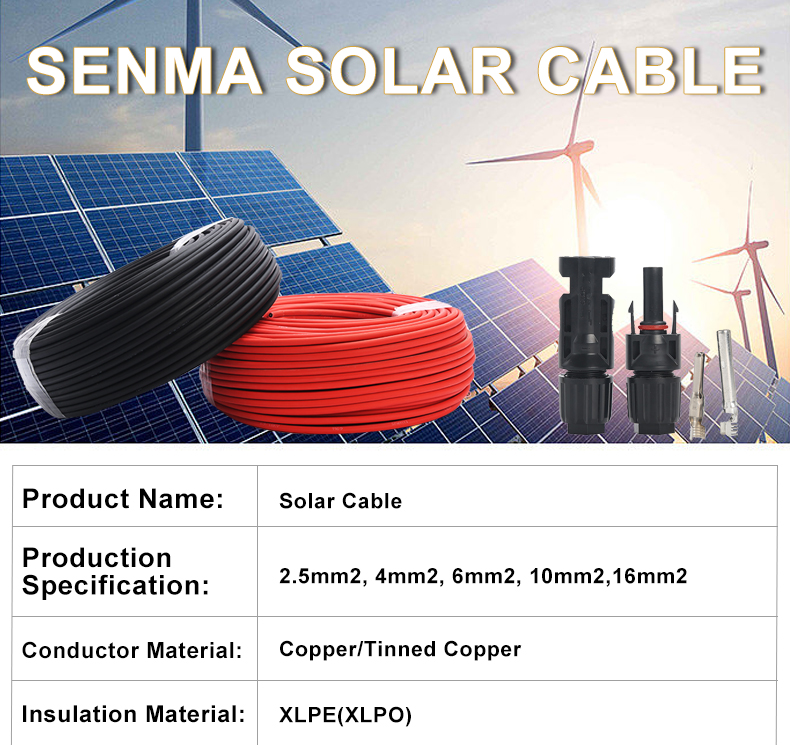Release time:2023-10-08 17:49:48 Author:
In the construction process of photovoltaic power plants, in addition to the main equipment, such as photovoltaic modules, inverters, and step-up transformers, the materials of photovoltaic wires and cables that are connected together play a crucial role in the overall profitability, operation safety, and efficiency of the photovoltaic power plant. Below is a detailed introduction to the common cable models and materials used in photovoltaic systems, as well as their usage and usage environment.

Photovoltaic special cable: PV1-F- 1*4mm ²
The cables connected in series to the combiner box are generally used: photovoltaic special cable PV1-F-1*4mm ²。
Features: Photovoltaic cables have a simple structure, and the polyolefin insulation material used has excellent heat resistance, cold resistance, oil resistance, and UV resistance. They can be used in harsh environmental conditions and have a certain degree of mechanical strength.
Laying: It can be protected through pipes, and component supports can be used as channels and fixation for cable laying to reduce the impact of environmental factors.
Power cable: ZR-YJV22
The steel strip armored flame-retardant cross-linked cable ZR-YJV22 is widely used for connecting cables from combiner boxes to DC cabinets, DC cabinets to inverters, inverters to transformers, transformers to power distribution devices, and power distribution devices to the power grid.
The common ZR-YJV22 cable nominal cross-section in photovoltaic power generation systems is 2.5mm ²、 4mm ²、 6mm ²、 10mm ²、 16mm ²、 25mm ²、 35mm ²、 50mm ²、 70mm ²、 95mm ²、 120mm ²、 150mm ²、 185mm ²、 240mm ²、 300mm ²。
Features:
(1) The texture is relatively hard, with a temperature resistance level of 90 ℃, which is easy to use. It has the characteristics of low dielectric loss, chemical corrosion resistance, and installation is not limited by drop.
(2) It has high mechanical strength, good resistance to environmental stress, good thermal aging performance, and electrical performance.
Laying: It can be directly buried, suitable for fixed laying, and suitable for different laying environments (underground, underwater, trench and tunnel).
Power cable: NH-VV
NH-VV copper core PVC insulated PVC sheathed fire-resistant power cable. Suitable for rated voltage of 0.6/1kV.
Usage characteristics: The long-term allowable working temperature is 80 ℃. The allowable bending radius during laying: single core cables shall not be less than 20 times the outer diameter of the cable, and multi core cables shall not be less than 12 times the outer diameter of the cable. When laying cables, there is no need to preheat them when the ambient temperature is not lower than 0 degrees Celsius. Voltage laying is not limited by drop.
Laying: Suitable for occasions with fire resistance requirements, can be laid indoors, in tunnels, and trenches. Be careful not to withstand external mechanical forces and can be directly buried.
Control Cable: ZC-KVVP
ZC-KVVP copper core PVC insulated PVC sheathed braided shielded control cable. Suitable for control, monitoring circuits and protection circuits with AC rated voltage of 450/750V and below.
Features: The long-term allowable use temperature is 70 ℃. The minimum bending radius shall not be less than 6 times the outer diameter.
Laying: Generally laid indoors, in cable trenches, pipelines, and other fixed places that require shielding and flame retardancy.
Communication Cable: DJYVRP2-22
DJYVRP2-22 polyethylene insulated polyvinyl chloride sheathed copper wire woven shielding armored computer special soft cable, suitable for electronic computers and automation connection cables with a rated voltage of 500V and below that have high anti-interference requirements.
Features: DJYVRP2-22 cable has the characteristics of oxidation resistance, high insulation resistance, good voltage resistance, and low dielectric coefficient. While ensuring its service life, it can also reduce mutual crosstalk and external interference between circuits, resulting in high signal transmission quality. The minimum bending radius shall not be less than 12 times the outer diameter of the cable.
Laying: The cable is allowed to be fixed and laid for use under ambient temperatures of -40 ℃~50 ℃. Laid indoors, in cable trenches, pipelines, and other places that require electrostatic shielding.
Communication Cable: RVVP
Copper core PVC insulated PVC sheathed insulated shielded flexible cable RVVP, also known as electrical connection anti-interference flexible cable, is a communication cable suitable for alarm, security and other anti-interference needs, safe and efficient data transmission.
Characteristics: The rated working voltage is 3.6/6kV, the long-term working temperature of the cable conductor is 90 ℃, and the minimum allowable bending radius is 6 times the outer diameter of the cable. Mainly used as communication cables to resist interference. Laying: RVVP cables should not be exposed to sunlight, and the bottom core must be well grounded. If weak current circuit communication cables need to suppress electrical interference intensity, they should be laid in steel pipes and boxes. When laying parallel to power cables, the distance between them should be kept as far away as possible.
